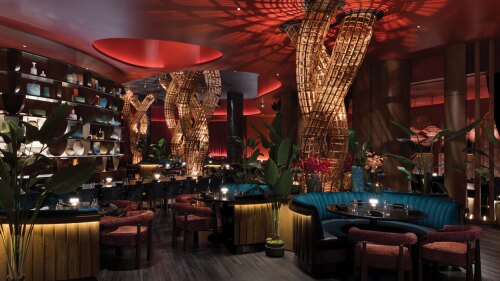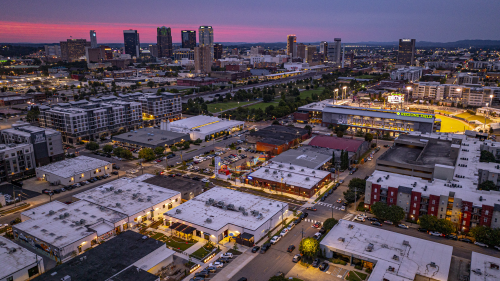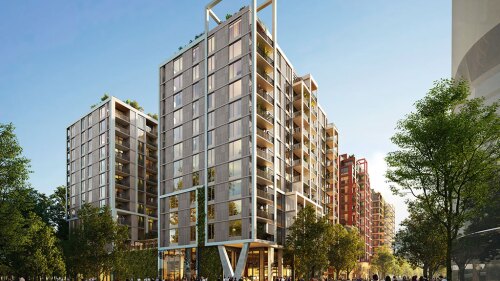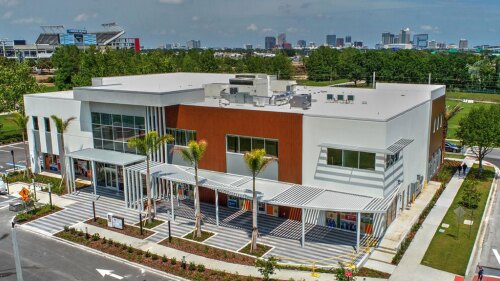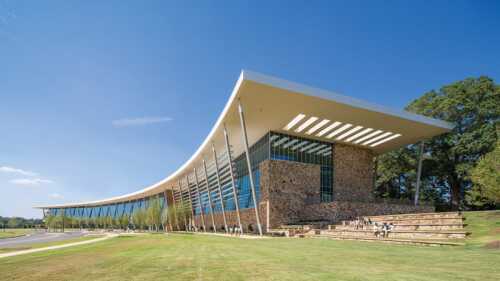Property Types
Hotels and Resorts
The hotel industry in the United States faces complex challenges in 2025, according to Jan Freitag, national director of hospitality analytics for the CoStar Group. During the “State of the U.S. Hotel Industry” presentation at the ULI 2025 Spring Meeting in Denver, Colorado, Freitag highlighted the challenges facing the hotel business amid macroeconomic uncertainty.
Once a sprawling expanse of uncharted land, Las Vegas, Nevada, has evolved into the entertainment capital of the world, a gaming super-hub, and a premier destination for sports. This remarkable transformation didn’t happen overnight; it stemmed from decades of strategic planning, investment, and visionary zoning recommendations.
Las Vegas is unlike any other place in America. Each year it draws more than 40 million visitors to the dazzling casinos and hotels that “turn night into daytime”—and transform the city into a glittering jewel in the desert. With 164,000 hotel rooms, Las Vegas is the largest hospitality market in the U.S.—outpacing Orlando, Florida, the next biggest market, by approximately 15 percent, according to JLL.
Industrial
Standing in the shadow of Regions Field and within earshot of Railroad Park, Birmingham’s Urban Supply hints at what the next chapter of downtown life could look like. Once-quiet brick warehouses are being steadily reimagined into patios, storefronts, and gathering spaces along a new pedestrian alley. Early tenants have begun to open their doors, and programming is slowly bringing people into the district. While the project is still in its early stages, the framework is in place for a vibrant hub that will grow block by block in the years ahead.
What trends are shaping the future of the industrial sector? Four experts from ULI’s Industrial and Office Park Development Council talk about the industrial submarkets and property types that offer the greatest opportunities, challenges developers face in bringing new projects to market, ways artificial intelligence and emerging technologies are reshaping the sector, tenant priorities, and other key trends.
After a quiet first half of 2024, CMBS originations increased 59 percent in Q3 on a year-over-year basis, according to the Mortgage Bankers Association’s Quarterly Survey.
Mixed-Use
Most cities and jurisdictions are not sustained by large catalytic redevelopments. On the contrary, they are typically built “block by block, or even lock by lock,” by small to medium-sized development businesses accomplishing significant infill developments that contribute to the urban environment. Read about the examples of successful infill projects presented by the panelists at the ULI 2010 Fall Meeting session entitled, “Entrepreneurial Development Strategies for Targeted Infill.”
Leaders who worked on three transformative urban projects showed why the projects had distinguished themselves as ULI award winners at the “Game Changers” session at ULI’s 2010 Fall Meeting. Urban Redevelopment Authority of Singapore introduced The Southern Ridges; Downtown Fort Worth, Texas and its Sundance Square; and, Columbia Heights, a historic neighborhood in northwest Washington, D.C., and its commercial center are three case studies that offer what the public sector can do, even in the current economic climate.
What are smaller scale developers currently doing to survive? Four of them shared stories of what they were doing in 2007 (3 in the metropolitan Washington, D.C., region), and how they’re coping now to position their firms for future opportunities, at ULI’s 2010 Fall Meeting session, “The Current Environment for Smaller Developers.”
Multifamily
Making a significant move in the multifamily investment space, industry veteran Matt Ferrari officially launched PXV Multifamily, a private investment firm poised to acquire up to $2 billion in assets over the next 36 months. With a focus on both middle-market value-add properties and institutional-quality opportunities across the United States, PXV stands ready to capitalize on emerging market trends and challenges. Ferrari is an active member of the Urban Land Institute and the Multifamily Blue Flight Product Council.
In 2013, when the founders of Redbrick LMD looked over a large swath of land in Southeast Washington, D.C., they immediately connected with the breathtaking views of the U.S. Capitol, the Washington Monument, the Anacostia River, and expansive green space. They recognized that this kind of access was rare anywhere in the region, but especially in this often-overlooked corner of the city.
The evolution of community efforts to improve access to housing reveals that successful projects often hinge on fostering strong local partnerships that can provide essential supports and services.
Office
There are many paths to earning a university degree in real estate development, and a wide variety of disciplines and subjects provide grist for that education mill.
Despite some downward-trending market indicators, the forecast for the commercial real estate sector is decidedly more mixed for the coming year, depending on the market sector, according to Deloitte.
Residental
The nine-hole golf course at the Charles R. Drew Charter School gets a lot of use during an average school day. That golf is a dedicated subject at a southern school is not exactly remarkable—but how this came to be is. Two decades ago, the golf course was closed—and as decrepit as the East Lake Meadows housing project that sat on its edge.
New research sponsored by UDR Inc. and published by ULI shows that 26 percent of gen Yers currently own homes and virtually all expect to own a home eventually.
In other times, Houston’s economic performance in 2014 would have been considered outstanding. But despite those strong results, no euphoria spills from the lips of Houston economists today. Caution rules in the business community.
Retail
For decades, civic leaders have tried to revitalize Market Street, San Francisco’s central thoroughfare, only to see their efforts founder. “I sometimes call it the great white whale of San Francisco,” says Eric Tao, managing partner at L37 Development in San Francisco and co-chair of ULI San Francisco. “Every new mayor, every new planning director, every new economic development director has chased that white whale.” This year, however, an international competition of ideas hosted and run by ULI San Francisco, with support from the ULI Foundation, generated fresh momentum for reimagining the boulevard. The competition drew 173 submissions from nine countries and sparked new conversations about the future of downtown San Francisco.
The OAK project began in 2009, when a development firm set their sights on the corner of Northwest Expressway and North Pennsylvania Avenue, the state’s most important and busiest retail intersection. As the region’s only parcel capable of supporting a vertically integrated project of this scale and density, that land represented an opportunity to create something truly special.
As aging retail continue to evolve, one increasingly popular trend has been to redesign malls as town centers—recalling a time when such commercial districts were the heart and soul of a community. Mall–to–town center retrofits are emerging throughout the nation, especially in suburban communities, where pedestrian-friendly, mixed-use environments are highly attractive to millennials now raising families.



